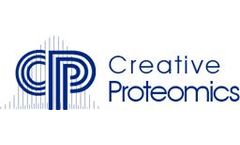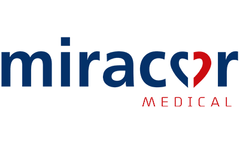Refine by
Cells And Smooth Muscle Cells Articles & Analysis: Older
21 articles found
Skeletal muscle microvascular endothelial cells (SMECs) play an essential role in maintaining muscle function, metabolism, and overall health. These specialized cells line the blood vessels within skeletal muscles, forming a barrier that regulates the exchange of substances between the bloodstream and muscle tissue. Their significance extends beyond mere structural support; they actively ...
When we look at the awe-inspiring architecture of life at the cellular level, one of the most intriguing and essential features is the cytoskeleton. This dynamic network of protein filaments provides structure, facilitates movement, and enables intracellular transport. Advances in technology have revolutionized our understanding of the cytoskeleton and have expanded the possibilities of ...
Cellular Sources of MMPs MMPs are produced by a variety of tissues and cells. MMPs are secreted by pro-inflammatory cells and uteroplacental cells, including fibroblasts, osteoblasts, endothelial cells, vascular smooth muscle, macrophages, neutrophils, lymphocytes, and cytotrophoblasts. ...
Cardiovascular safety liabilities caused 52.3 % of 44 marketed data from 1980 to 2011, and cardiovascular disease remains the leading cause of death globally, yet only 8.7% of cardiovascular drugs successfully pass clinical trials. These statistics demonstrate the need to address a patient’s specific genetic make-up and phenotype by adopting a personalized treatment methodology for ...
Serum enzyme tests have been used in clinical practice for a long time, such as increased amylase activity in serum and urine of patients with acute pancreatitis. In the 1930s, some scholars reported that the determination of serum lipase and alkaline phosphatase activities is helpful for the diagnosis of pancreatitis and bone diseases, respectively. After the 1950s, the application of serum ...
Lipoprotein lipase (LPL) is a glycoprotein synthesized and secreted by parenchymal cells such as adipocytes, cardiomyocytes, skeletal muscle cells, mammary cells, and macrophages, with a molecular weight of 60ku and containing 3-8% carbohydrates. The physiological function of LPL is to catalyze the breakdown of TG in the core of CM and VLDL into fatty acids and monoglycerides for tissue oxidative ...
The heart is a unique organ in many respects since its activity is mandatory to sustain life. The heart’s circulatory system and coronary flow regulation are highly adapted to the vital role of the heart in sustaining life and to everyday physiological challenges. Understanding coronary physiology is key for treating patients with ischemic heart disease in general, and ...
In a healthy vein, the intima is one cell layer thick and comprised solely of endothelial cells. With intimal hyperplasia, cells may migrate into the intima from the medial and adventitial layers of the vein and from the circulation . Once they migrate into the intima, these cells express markers for myofibroblast and ...
Although the HAV is acellular when implanted, extensive preclinical and clinical testing has demonstrated that the HAV subsequently repopulates with the recipient’s own vascular cells. We report a first-in-man clinical experience using the HAV for arterial reconstruction in patients with symptomatic peripheral arterial disease. Methods: HAVs were manufactured using human ...
Abstract The goal of this study is to develop unique native endothelium mimicking nanomatrices and evaluate their effects on adhesion and spreading of human umbilical vein endothelial cells (HUVECs) and aortic smooth muscle cells (AoSMCs). These nanomatrices were developed by self-assembly of peptide amphiphiles (PAs) through a ...
RNA Sequencing in Cardiovascular Disease Research The use of scRNA-seq technology in cardiovascular research has a wide range of applications. scRNA-seq not only identifies rare cell subpopulations, but it also allows for cellular trajectory analysis based on each cell's transcriptome, which has been particularly beneficial in clarifying cell ...
Technology Networks interviews Dr. Mark Kotter, CEO of bit.bio. The interview digs deep into how bit.bio’s next generation cellular reprogramming technology, opti-ox™, is enabling scientists in research and drug discovery to overcome the shared challenges presented by human muscle models. Mark explains how pioneering work conducted in the 1980’s sparked the development of ...
Bybit.bio
This interim follow up report, at the long term time point of five years, assessed patient and conduit status in those who continued routine dialysis with the HAV Methods: HAVs are bioengineered by culturing human vascular smooth muscle cells on a biodegradable polymer matrix. In this study, patients with patent HAV implants at 24 months were ...
When we talk about intestinal bacteria or dietary fiber, we often hear about "short-chain fatty acids". So what exactly are short-chain fatty acids? Based on the number of carbon atoms in the carbon chain, fatty acids with less than 6 carbon atoms are commonly referred to as short-chain fatty acids (SCFAs), those with 6 to 12 carbon atoms are called medium-chain fatty acids, and those with 12 or ...
A new study clarifies how BRD4 (a protein that scientists have studied for many years) directs the spatial organization of DNA in the cell nucleus (a key function of stem cells to differentiate into muscle cells), which promotes the understanding of certain cancers and complex congenital diseases. Since the way DNA is folded is essential for gene regulation, this research not only has ...
Serum enzyme tests have been used in clinical practice for a long time, such as increased amylase activity in serum and urine of patients with acute pancreatitis. In the 1930s, some scholars reported that the determination of serum lipase and alkaline phosphatase activities is helpful for the diagnosis of pancreatitis and bone diseases, respectively. After the 1950s, the application of serum ...
The conversation around diabetes reversal has increased, and when researching diabetes there are numerous states to this claim, but how realistic is it? Sadly, diabetes affects a huge number of people worldwide and is responsible for blindness, kidney disease, limb amputation and death. WHO estimates that diabetes was the seventh leading cause of death in 2016[1] and 422 million adults currently ...
Producing 'bio-ink' The key to the experiment's success was the biological material developed by Sichuan Revotek, known as bio-ink, which is made from stem cells derived from the fat tissue of monkeys. Stem cells have the ability to grow into any cells within the body, and the use of the monkey's own stem cells ...
While this scaffold reduces ECM maturation times cell seeding is difficult due to the high density of decellularised tissue, particularly within the medial layer of the scaffold. In this study, we investigated the possibility of direct injection of vascular cells within decellularised porcine carotid arteries through the use of micro–needles inserted into the ...
Cell–electrode interfaces play a critical role in extracellular recording. Enlarging the electrode surface area with nanostructures yields higher signal–to–noise–ratios due to lower interface impedance. Adhesion and viability of various cell types on large–scale gold nanopillar electrodes to improve cell–electrode coupling were investigated. Cardiac muscle and human embryonic kidney cells ...














